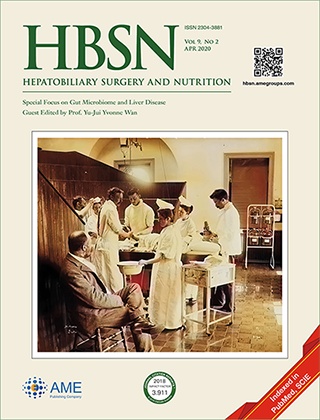Review Article
Appraisal of the current guidelines for management of cholangiocarcinoma—using the Appraisal of Guidelines Research and Evaluation II (AGREE II) Instrument
Appraisal of the current guidelines for the management of cholangiocarcinoma using AGREE II instrument demonstrated that they are based on relatively low-quality evidence.
Preparing for liver surgery with “Alphabet Soup”: PVE, ALPPS, TAE-PVE, LVD and RL
Future liver remnant (FLR) size and function is a critical limiting factor for treatment eligibility and postoperative prognosis when considering major hepatectomy. The article reviews the principles and applications of portal vein embolization (PVE) and the newer hepatic regenerative techniques to improve peri- and postoperative outcomes.
Review Article on Gut Microbiome and Liver Disease1
Original Article on Gut Microbiome and Liver Disease1
Original Article
Is there any correlation between liver graft regeneration and recipient’s pretransplant skeletal muscle mass?—a study in extended left lobe graft living-donor liver transplantation
This study on living-donor liver transplantation recipients showed that pre-transplant sarcopenia was associated with an impaired early regenerative capacity of the graft. Thus, along with portal circulation and graft quality, even the pre-transplant metabolic status of the recipient is a significant determinant of graft regeneration.
Editorial
Viewpoint
Letter to the Editor
Images in Clinical Medicine
Meet the Professor2
Disclosure:
1. The series “Gut Microbiome and Liver Disease” was commissioned by the editorial office, Hepatobiliary Surgery and Nutrition without any sponsorship or funding. Yu-Jui Yvonne Wan served as the unpaid Guest Editor for the series.
2. The series “Meet the professor” was commissioned by the editorial office, Hepatobiliary Surgery and Nutrition without any sponsorship or funding.


